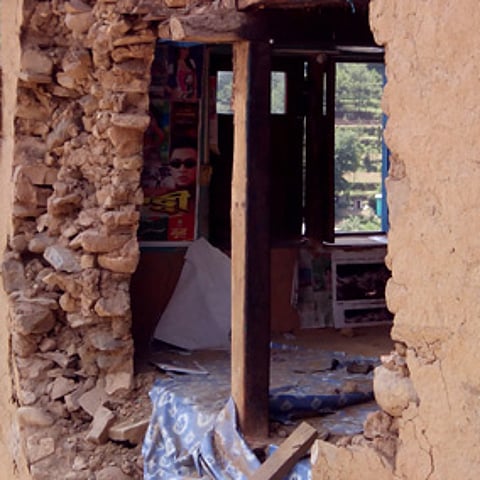The cost of rebuilding
On 25 April, Purna Bahadur Tamang was working in a forest that overlooks his village when the earthquake struck. As he saw houses collapse and the dust rise around his home, in which he knew his wife and two young kids were, he made a mad dash for 20 minutes across the hilly terrain to reach them. Thankfully, he found that his family was okay, and so were his buffalo, goat and two chickens. A newly-born calf, however, died because the roof of the shelter caved in on it. Everytime he mentions this calf, his two 12-year-old nieces, who live in Kathmandu, giggle. They are visiting the village to mourn the death of their uncle who died before the earthquake. They see any grief about the animal's death as ironic, given the circumstances.
The casualties in Falame village in the district of Kavrepalanchowk, accessible via a dirt road some distance from the Panauti-Kushadevi stretch, and 30 kilometres from Kathmandu, is restricted to animals and houses. Made up mostly of the Tamang community, there are only a few young men left in the village, as most have left in search of jobs outside. Many families worry about the process of rebuilding their homes without these men. Although, for the present at least, there are staff and teachers volunteering from a nearby private boarding school, helping clear debris and set up temporary shelters, Purna Tamang is most worried about not having enough money to fix his home before the monsoon.

